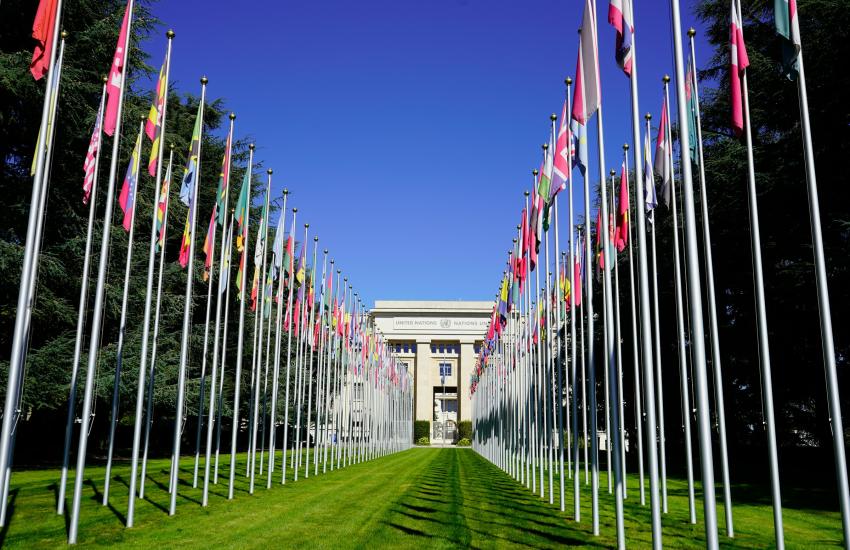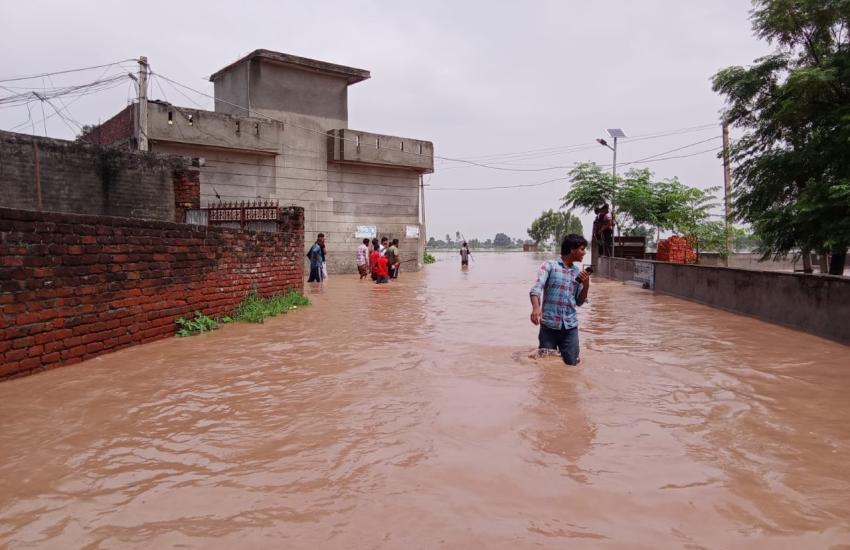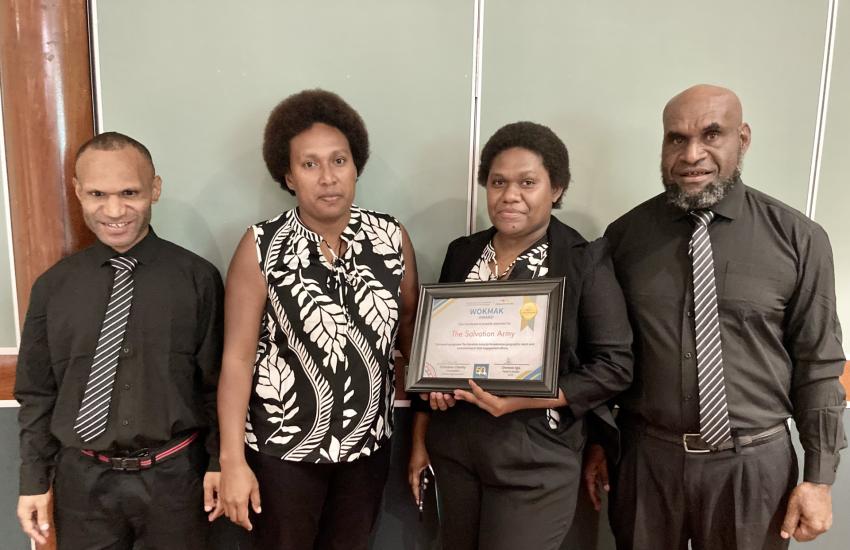‘No ordinary commercial house, nor merely the administrative centre of a worldwide organisation … a spiritual centre which unites people of more nations than any other building in the City of London.’ So General George Carpenter described The Salvation Army's International Headquarters in 1941. It's a description which remains true today, with the opening of brand-new, state-of-the-art premises on the original site acquired by the Army’s Founder, William Booth, in 1881.
The new building will be officially opened on 9 November by the United Kingdom’s Princess Royal – daughter of Her Majesty Queen Elizabeth II. It was the Princess Royal’s grandmother – then Queen Elizabeth the Queen Mother – who opened the previous building on the site, in 1963.
The opening will be a prestigious occasion but, in a message to guests attending the ceremony, the Army’s current world leader, General John Larsson, declares: ‘In this era of downsizing, I am pleased to tell you that this is the smallest International Headquarters building the Army has ever had!
‘The reason,’ he says, ‘is not that The Salvation Army itself is getting smaller. On the contrary the Army worldwide is larger today than it has ever been. The reason is that the building reflects the separation of The Salvation Army’s international and UK administrations that took place in 1990. Until that time the two administrations were intertwined and both were part of “International” Headquarters. When in 1999 the United Kingdom administration relocated to a headquarters south of the River Thames, the opportunity arose for International Headquarters to be housed in a smaller building more suited to the needs of today.'
The General explains that, in the conceptual stage, the stated aims were that the new building was to be modern in design, frugal in operation and evangelical in purpose.
‘And here now stands the building that represents the outworking of those concepts,’ he says. ‘We believe that in its structural design the aims have been achieved. The task before us is to put into practice the aims that relate to its functioning.
‘It’s an exciting time for us. This building is important to The Salvation Army and its mission, and we give thanks to the vision of the many people who made it possible. Above all, this new building demonstrates that we are, together, actively stepping forward to respond to the challenges and opportunities presented by a fast-changing, modern, global world. That can only be a good thing!’
Another General with a huge interest in the new building is General John Gowans (Retired). As a young captain, he felt privileged to be present when the foundation stone of the previous International Headquarters building was laid. He assumed that the headquarters would be around for a very long time. But buildings grow old more rapidly than they used to. Little did he think that some 36 years later he would, as the General himself, be facing the difficult problem of what to do with a building that many felt was no longer suitable for its task.
There was a lot of spare capacity following the departure of UK Territorial Headquarters, but the old 101 Queen Victoria Street building did not lend itself to new tenants. Open-planning was difficult, since so many of the walls were structural; and laying IT cables or installing air-conditioning was equally problematic as the ceilings were too low. By the new millennium it had been generally if reluctantly agreed that The Salvation Army should move away from the well-loved site for a simpler and less expensive place, and make use instead of its commercial value. Several possibilities were viewed without much enthusiasm.
Thankfully, General John Gowans was not alone in coming to the conclusion that to leave this spiritual home would be a mistake. That to pass up the chance to be there for five million people a year walking between the Millennium Bridge across London’s River Thames and St Paul’s Cathedral would be madness. That the situation should be seen, not as a problem, but as an opportunity to re-evaluate, to move on, to create something inspirational. By common consent it was General Gowans’s vision that drove the Army towards a new building that would be transparent, open and welcoming – fit to reach out to a modern world.
A vision
Says General Gowans: ‘As I was involved in the early discussions, people have asked me if I had a vision for the new International Headquarters. My answer has to be ... “Yes! Oh yes!"
‘Though we’re blessed with staff who can communicate many things, I have always felt that this new building of ours should be able to speak for itself. Most importantly it has to be a welcoming place where people feel immediately at ease. It should have nothing of the barricade about it. It should not be a hiding place but transparent, cheerful and disarming.
‘More than that, it should say that any work undertaken in God’s name deserves the best and most efficient equipment that modern technology can provide. At the same time it should not suggest extravagance or draw attention to itself. Its mission matters most.
‘It should suggest at once that it does not exist for itself but to serve everybody, and particularly those who are in trouble, or who have a problem. So though it may not always have the solution it should at least offer clear guidance as to where that solution may be found. It should be obvious that it is dedicated to the service of Salvationists in the 109 countries where we are at work. It is international in its concerns, in its attitude, in its personnel. Its ability to speak many languages should be obvious.
’It has to offer information concerning the Army’s philosophy, its history, its present projects, its needs … and not hesitate to invite volunteers of all faiths or none to help us in our compassionate activities, with no motive other than increasing the efficacy, goodness and scope of the activities themselves.
’It should be clearly determined to help the Army achieve its basic ambitions: to announce the good news that is personified in Christ, to produce Christlike people, to serve suffering humanity without discrimination of any kind.
’And finally, without any air of the sanctimonious, the visitor should sense the presence of God in the place, even though it may not be recognised as that. The Mercy Seat – symbol of God’s presence, of his love and compassion – should take its place in the heart of the building with an open invitation to prayer.
‘So, am I happy with what we’ve achieved? I am delighted. In many ways this is just the beginning, because now the place is coming to life and our own work here begins again. The optimism the new building generates is a vital thing. Yes, I’m happy.’
General Gowans’s search for the right person to bring his vision to fruition led him to Andrew Chadwick, whose architecture practice specialises in space economy and design. Chadwick’s philosophy is based on considering people and space as one – not as two isolated issues.
All organisations, he believes, have a structure, infrastructure and ethos, but so do all working spaces. If the working space is designed with this in mind, in harmony with the governing principles of its occupier, the results are highly effective.
All costs covered
Two masterstrokes at the beginning set the tone for the entire project. The first was the revelation that International Headquarters needed far less space than it at first thought, a discovery that enabled the commercial development of part of the site to cover all the capital costs of constructing the new headquarters building. The second was the creation of a space concept to tie the secular and religious dimensions of the Army together, something which formed the brief for the whole professional team.
Andrew Chadwick’s verdict at the conclusion of the project? ‘This is the only time I have ever designed a building by committee where it’s actually worked! We’d take in two or three concepts, all of which we could live with, we argued for what we felt was most appropriate, the Army said what it felt … and we progressed. I’ve never had a meeting with the Army where I haven’t felt better afterwards, actually.
‘We began with four questions, put to the General, the Chief of the Staff, commissioners and various senior lay people, to get an idea of how the place worked. What differentiates the organisation? Tell us about the structure that supports this. Does the infrastructure, your IT and telecommunications, work for you? Describe the organisation in adjectives.
‘What did we discover? That the Army felt that the world saw it as a caring organisation, but they saw it more as an evangelical one, driven by the love of God into care for the poor and afflicted. The strong feeling, led by General Gowans, was that its true nature should be made more public, be more transparent.
‘On the basis of our analysis we proposed three things: that the building should be frugal in size, entirely modern in its infrastructure, and evangelical in nature – in other words not simply a modern office building, but a building that had the religious demeanour in the sense that the Army understands so well. Those three phrases were the drivers for everything.
‘Following our space modelling process we unearthed probably the most important fact of all, that the Army needed only 35,000 square feet of space rather than the 50,000 it had originally estimated. This radically altered the balance of possibilities. In the long term it enabled the Army to retain the site, because it released a further 15,000 square feet for the eastern end (99 Queen Victoria Street), creating a far more viable and profitable office space than originally estimated: 85,000 square feet rather than 70,000. Profitable enough to pay for the headquarters outright; in itself a highly important message to send to the world.
‘We suggested that the Roman military camp be taken as a model. A Roman camp had a north-south/east-west road intersecting it, on the crossing of which was the General’s tent at the head of the public space, the “Forum”. It was here that all truly important interaction took place. The further one moves from the Forum the more private it becomes, with closed spaces for privacy, concentration, prayer and counselling.
‘Why a Roman camp? The military parallel is obvious, but in fact the important link is one of ethos. The Roman ethos was based on loyalty, discipline, endurance, application, seriousness and piety. It had a structure to match – a military structure and a transport infrastructure. In the same way The Salvation Army understands exactly the notion of the communication between ethos and structure, the key being that its ethos is bound in faith. And without being at all sentimental about it, in the end it is religious faith that has built this building. Because it’s been patient and because it’s allowed the people it’s employed to do their best, The Salvation Army has got a superb result.’
Andrew Chadwick’s research and Roman camp concept formed the basis of the brief for the developer-architect competition. The competition, held in 2000, was won by Abstract Securities (the development partner) with Sheppard Robson (the architects). Quite simply they showed the greatest sensitivity to the needs of the Army, and the greatest understanding of the ethos that underpinned the brief. In 2002 the development agreement came into effect when the Army vacated the building.
Martin Sagar, from Sheppard Robson, says: ‘For us it was the perfect brief: unusual, clear and most importantly driven by an ethos. Display the Army’s core values in three dimensions, design a building where transparency is a theme, where nearly half of the space is dedicated to public interaction – quite a challenge.
Route of Light
‘We drew a diagram we called the "Route of Light", with the Tate Modern art gallery at one end and St Paul’s Cathedral at the other. It seemed very obvious to us that the first thing to do was put the Salvation Army headquarters at the end of the site facing this extraordinary public route. That immediately gave us the breakdown of the building. Since we wished to keep the commercial development and the headquarters discrete, the next logical step was to place the cores of the building – fire escapes, toilets and lifts – together, to act as a barrier subdividing the two.
‘The next problem was to unite what are effectively two buildings. In the end we did this by wrapping the distinctive shroud-like outer surface, whose role is to reduce solar gain, around the building to the north. This gives The Salvation Army a bigger presence on the street than it actually has. It also has the pleasing effect of giving a fractured reflection of various buildings around the outside, including St Paul’s.
‘We knew we had a large amount of space in the basement because of the way that the site falls. We decided to reverse the traditional idea of having an atrium in the centre of a building by bringing it to the outside. This creates a kind of moat, a tall and impressive space to showcase the whole interior, but also let light into the middle of the floor below. It allowed the public views down into the heart of the building and it also necessitated the impressive “bridge” entrance.
‘Once we looked at the way the Army was organised, the plans almost drew themselves. Our interpretation of Andrew Chadwick’s Roman camp, by the very nature of the space available, had to be a three-dimensional one, but it doesn’t suffer for that. The main “forum” is there at ground level for all to see: it will be alive and active and visible, five meeting rooms on the go, certainly not one of those hotel lobby-style fronts where all is hidden, and no character and spirit can be discerned.
‘The first floor houses the General and, once the decision was made to place him on the most public corner, the rest fell quite quickly into place. Next to the General is the World President of Women's Ministries. Opposite is the General’s Chief of the Staff and the World Secretary for Women's Ministries. The chapel is situated between the two, over the entrance to the building, and of course the floor is equipped with meeting rooms.
‘With the key aspects of leadership and communication given expression on the first and ground floor, and continued on a more informal level on the lower ground floor, we wanted to show if possible how these things held up the rest of the organisation. We did it by introducing the supporting angular H-shaped pillars that do indeed appear to lift the top three floors to the heavens. At the same time, the pillars draw the eye of passers-by down to the lower ground floor, and the cafe, important for announcing its presence.
‘Without doubt, however, the centrepiece is the chapel. It hangs over the entrance, into public space, radiating a golden light at night when lit from inside, a beacon on the “Route of Light” we mentioned earlier. It has been achieved through the unbelievable capacity for invention with glass of the London firm Carpenter/Lowings – a collaboration between US sculptor James Carpenter and British architect Luke Lowings – and their technical and imaginative ability with light.
‘They've done two amazing things with the chapel. The walls consist of two layers of glass, one translucent and the other coloured and reflecting a warm amber. This retains privacy inside the chapel, important since it hangs out into public space. It also gives it its extraordinary glow. The second deals with the fact that the view out of the clear west end of the chapel faces onto brickwork. What they have done, however, is find a way of reflecting the image of the sky into the chapel so passing clouds can be contemplated rather than a brick wall!
‘It’s been a tremendously rewarding job to work on, not least because of who we were working for. I wish The Salvation Army as much fulfilment working in 101 as we had in designing it.’
Following the breakdown in pre-let discussions for the commercial building proposed at 99 Queen Victoria Street, the speculative office building accompanying 101, Abstract Securities approached Hines, a privately-owned American real estate company who had been looking to establish a presence in the UK to complement widespread global activities. Hines agreed a transaction whereby in return for a 150-year lease on the 99 Queen Victoria Street site they would provide the new International Headquarters for the Army.
Say Hines: ‘Having founded Hines UK in summer 2000, we were looking to establish a Central London presence on a site where we could make a difference. We were particularly attracted by the ambition of the Army and the dynamism of the location adjacent to the Millennium Bridge in a part of the City seeing extensive change.
‘We love the ambition of the building. It could have been a mixture of brick and stone to reflect the adjoining properties, but pleasingly the Army has pushed hard to create something dynamic, and we believe that what it has achieved is something fantastic. The result is a building that will grab people as they pass, and indeed, as we have seen since the building was effectively unwrapped, it makes a standing contribution to the local architecture and environment.’
Worldwide broadcast
Those who, on the official opening day, are present on the ground floor of 101 Queen Victoria Street watching the Princess Royal unveil a commemorative plaque might not be aware that the same ceremony will be enjoyed from other vantage points in the building, and indeed all around the world. Footage will be beamed live to huge plasma screens in the cafe area, to workers at computer screens on the upper floors and to an uncountable number of other computer screens worldwide via the Internet.
The ceremony, on 9 November, will be broadcast from around 2.15 pm GMT and can be viewed at: http://www.salvationarmy.org
The working life of the building will be greatly enhanced by the thought that has gone into its layout and design. But what will actually happen there?
The function of International Headquarters is the handling of day-to-day business, the allocation of resources and strategic, long-range planning. It acts as a resource centre for the worldwide Army and a facilitator of ideas and policies. This starts on the first floor with the centre of the Movement, with the General and his Chief of the Staff, their spouses, and their private secretaries – and emanates from there.
Above the General are three floors of office space, where the administration takes place. Possibly most enlightened of all (literally!) is that the staff present most often in the building will have their desks in the areas around the edge of the office floors – areas traditionally reserved for office space for the leadership. Since many of the leaders, particularly on the second floor, frequently travel, it makes sense to put those who will most benefit closest to where they will be most inspired.
The ground and lower-ground levels are designed to provide a high degree of interaction between the Army and the world outside. Five highly-visible meeting rooms face the entrance, allowing people to see the Army at work. Below, the more informal cafe and visitor centre will welcome the public, giving them the opportunity to mix with and talk to Salvationists, should they wish.
The notion of engaging the public in a lively, non-threatening manner is continued through the imagery and signage used throughout the building. International faces and costumes that form backdrops and partitions, quotations from the Bible that wrap around facades and meeting rooms, and simple religious icons such as the ‘five loaves’ used to bring life to the cafe help to link the secular with the religious, and demonstrate international and evangelical aspects. The use of transparent materials, colour and light – even in the lettering and imagery itself – gives further expression to the ethos behind the Army.
International Headquarters





